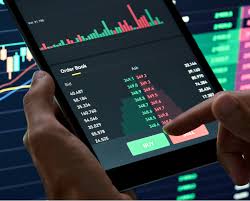
The Essential Guide to Crypto Trading Indicators
In the rapidly evolving world of cryptocurrency, traders are constantly seeking an edge to help them navigate the complex market. One of the most effective ways to gain that edge is through the use of various Crypto Trading Indicators https://naiad.pages.dev/00/mGQfotuPFh designed to analyze price movements and signal potential trading opportunities. This article will explore the most popular and effective crypto trading indicators, their applications, and how they can enhance your trading strategy.
What are Crypto Trading Indicators?
Crypto trading indicators are tools used by traders to analyze the price movements and trading volume of cryptocurrencies. They help in making informed decisions by providing insights into market trends and potential price reversals. These indicators can be categorized into two main types: leading indicators and lagging indicators.
Leading Indicators vs. Lagging Indicators
Leading indicators are designed to predict future price movements, giving traders a heads-up on potential market behavior. Common leading indicators include the Relative Strength Index (RSI), Stochastic Oscillator, and Moving Average Convergence Divergence (MACD). On the other hand, lagging indicators are based on historical price data and are typically used to confirm trends after they have started. Examples include moving averages and the Average True Range (ATR).
Key Crypto Trading Indicators
1. Relative Strength Index (RSI)

The RSI is a momentum oscillator that measures the speed and change of price movements. It ranges from 0 to 100 and is typically used to identify overbought or oversold conditions in the market. An RSI above 70 indicates that an asset is overbought, while an RSI below 30 suggests that it is oversold. Traders use these thresholds to anticipate corrections and reversals.
2. Moving Averages
Moving averages smooth out price data to create a trend-following indicator. The two most common types are the Simple Moving Average (SMA) and the Exponential Moving Average (EMA). The SMA provides a straightforward average of prices over a specific period, whereas the EMA gives more weight to recent prices. Moving averages are essential for identifying trends and potential support and resistance levels.
3. MACD (Moving Average Convergence Divergence)
The MACD is a trend-following momentum indicator that shows the relationship between two moving averages of a security’s price. It consists of the MACD line, signal line, and histogram. When the MACD line crosses above the signal line, it generates a bullish signal, while a cross below indicates a bearish signal. The histogram provides visual representation and helps traders identify changes in momentum.
4. Bollinger Bands
Bollinger Bands consist of a middle band (SMA) and two outer bands that are standard deviations away from the SMA. This indicator helps traders understand price volatility. When the price is near the upper band, the asset is considered overbought; conversely, when it’s near the lower band, it is seen as oversold. Traders often use Bollinger Bands in conjunction with other indicators to confirm signals.
5. Average True Range (ATR)

The Average True Range (ATR) is a volatility indicator that measures market volatility by decomposing the entire range of an asset price for a given period. The ATR can help traders determine the best position sizing and stop-loss placement. A higher ATR indicates higher volatility, while a lower ATR suggests a more stable market.
How to Use Crypto Trading Indicators Effectively
To successfully implement crypto trading indicators, traders should consider the following steps:
- Combine Indicators: Relying on a single indicator can be misleading. Combining multiple indicators can provide a clearer picture of market conditions and improve the accuracy of signals.
- Backtesting: Before relying on an indicator for real-time trading, backtest it using historical data to see how it would have performed in past scenarios.
- Understand Market Context: Always consider the broader market context. Indicators can provide signals, but geopolitical news, regulatory changes, and macroeconomic factors can impact prices and should not be ignored.
- Keep it Simple: Overcomplicating trading strategies with too many indicators can lead to confusion. Focus on a few reliable indicators that you understand well.
The Importance of Risk Management
Using crypto trading indicators is only part of the trading equation. Effective risk management strategies are crucial for long-term success. Traders should establish clear entry and exit points, set stop-loss orders, and never risk more than they can afford to lose. By combining technical analysis with sound risk management practices, traders can protect their capital and reduce the likelihood of significant losses.
Conclusion
Crypto trading indicators are powerful tools that can enhance your trading strategy by providing insights into market conditions and potential price movements. By understanding and effectively utilizing these indicators, traders can make informed decisions, improve their trading performance, and ultimately increase their chances of success in the dynamic world of cryptocurrency trading. Always remember that trading carries risks, and it’s essential to stay educated, adaptable, and cautious in your approach.
Leave a Reply